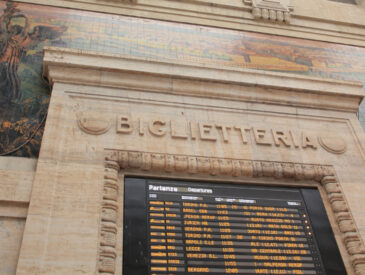
You have inside two different options or two different ways how you can see the exhibition. First option is special touristical easy and relaxed comfortable holiday option without thinking. No thinking, only feeling. Your emotions, your sensations, you can see it as being like big art installation, in art gallery… you go inside, you understand nothing, but everybody makes smart face…
Second option is more interesting but complicated: test for your logic. Because every object we have inside have not only nice interesting forms like in the art gallery but every object here has a function. These are actually true, real industrial historical objects from last one hundred years, but manipulated in surreal tradition: simple to say, I put it wrong together. So that your fantasy going the wrong way, but your logic must go in another way. Your logic must find the answer to the question, what is it real? It is like game for your brain. But we are not really technical museum, because if you want to understand every piece you need one week inside, it is one thousand objects in ten rooms, ja?
We are surreal museum, and most important thing in surrealism is creativity and fantasy. But creativity and fantasy in normal museums die in the first room at first object if you read explaining. Because if you know what is that, why you need creativity and fantasy? This is the point why inside no explaining, we want to rescue your fantasies, and we want to make a massager for your fantasy: so we put the things wrong. So when you are studying the different installations, you ask yourself of course “what is that?”, your fantasy wakes up and says to you wrong idea. But your logic wake up too and speak of why is wrong, what is wrong. If you hear these voices in your head, it is not dangerous, it is very good! Now you are creative process in your head.
So explains Vlad, proprietor of Berlin’s Designpanoptikum. He offers both a longer name – the surreal museum for industrial objects – and a simpler description: “like Frankenstein’s laboratory”. Originally a photographer, he became disillusioned with the vagaries of both digital manipulation and the art community, where the value of a piece seemed to depend as much upon the reputation of the creator or the echo chamber of reviews, exhibitions and improbable sales prices as any inherent artistry. Instead, he turned to industrial artifacts – whilst, for instance, the blades of a jet engine turbine have a beauty to their form, that form is driven ultimately by a function, as it must be suitable for flight. This necessity makes any visual appeal all the more striking – and besides, your money goes a lot further at a scrapyard than an art gallery!
So far, so sensibly germanic. But as his opening patter sets out, Vlad has eschewed a dry enumeration of machine parts in glass cases, and instead created a puzzle for visitors – reassembling and recontextualising the objects in bizarre scenes. Although instruments of torture or war have been deliberately excluded, anyone with a medical or dental phobia may wish to steer clear, and over-active imaginations can render even innocent objects sinister. Certain themes recur – he has a love of magnifying screens, globes-as-faces, optical devices, gasmasks – but the crammed series of rooms reward careful investigation for the unique pieces.
The main attraction, though, may be Vlad himself, who it is fair to say is somewhat of a character. Literally – his broken English is an affectation, but like some Derren Brown of the junkheap, his up-front admission of this fact somehow enhances rather than detracts from the experience, allowing it to be comfortably grounded as performance. Similarly, as more visitors arrive you’ll realise that the high-paced intro spiel is largely rehearsed, but he deftly weaves in appropriate references (in my case, a discussion of Banksy) and can apparently do this in several languages. Once initiated, guests are free to explore at their own pace, but if not needed at reception, Vlad will stalk through, pulling out choice pieces of the collection to pose more questions, tease out understanding of its original purpose, or elaborate on how it caught his attention.
I was struck by the contrast between here and the Pergamon, which I’d visited the previous day. There, visitors drifted from one set point in the audio guide to the next, interaction with each other rendered difficult by the headphones and unneccessary by the steady stream of facts. Yet much of it clearly went in one ear and out the other, as I realised when working on my photo captions a few weeks later. By contrast, in Vlad’s lair it feels natural to discuss the exhibits – or what brings you to Berlin! – with him or any other guests within earshot. Meanwhile, should you have found a quiet corner, you really think about what you’re looking at, rather than robotically checking off another waypoint. So whilst a visit to the Desigpanoptikum is immediately rewarding for its own features, its true value may be in changing how you approach future exhibits or collections: ditch the audio guide, ignore the placards, and try to genuinely investigate what’s being presented. I know I’ll be giving it a try!















